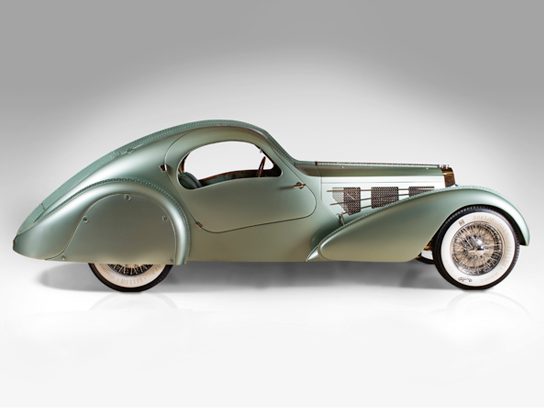
Bugatti Type 57S Competition Coupe Aerolithe recreation, 1935
This concept car, with a body made of lightweight magnesium, made a single appearance at the 1935 Earl’s Court Motor Show in the U.K. and was taken on one road test a year after the show. It was never manufactured, and experts believe that its metal was probably used during WWII for military purposes. A brand-new model, constructed by Canada’s Guild of Automotive Restorers from a few black-and-white photos and rough blueprints, used magnesium like the original even though the material is brittle—not to mention, flammable.
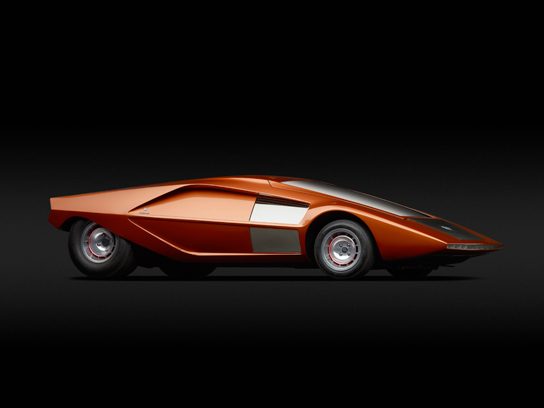
Lancia (Bertone) Stratos HF Zero, 1970
First shown at the Turin Motor Show in 1970, it’s said that this race car’s designers were initially driven by answering the question: “How low a car can we build?” At its highest point, the Zero stands just 33 inches off the ground, and both driver and passenger enter the car via a flip-up windscreen. This concept car cost around $65,000 to construct, which would be $450,000 in 2010 dollars. A fully-functioning model was completely restored in 2000.
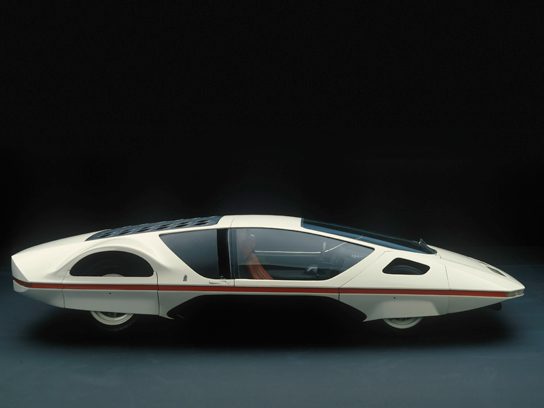
Ferrari (Pininfarina) 512 S Modulo, 1970
A labor of love for designer Paolo Martin, the Modulo was thought to be too futuristic by the president of his company, Pininfarina. It was not a practical car; the front two wheels couldn’t turn fully, and the car had no doors—a canopy went over its nose. Yet it debuted to great admiration at an auto show in Geneva, and it is on display at the Museo Pininfarina.
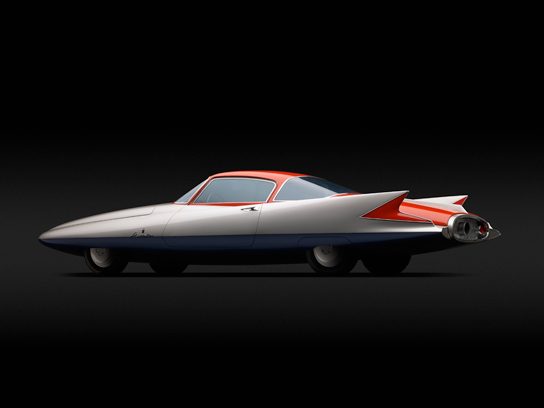
Chrysler (Ghia) Streamline X “Gilda,” 1955
Although commissioned by Chrysler, an American company, the spaceship-sleek Gilda was designed by an Italian, Ghia’s Giovanni Savonuzzi. It was aptly named for the femme fatale played by bombshell Rita Hayworth in the 1946 film of the same title. The vehicle was on display at the Henry Ford Museum until it was purchased by a private collector, who had it restored and fitted with a gas turbine.
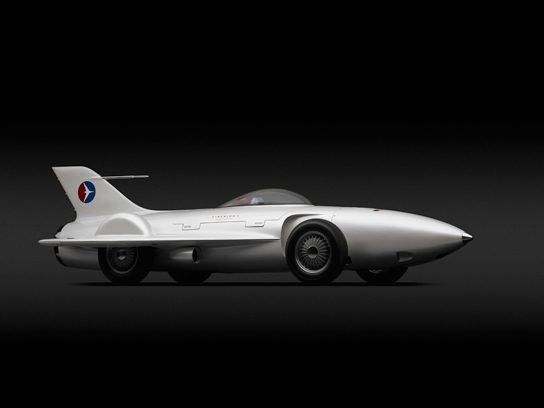
General Motors Firebird I XP-21, 1953
Modeled on a fighter jet and never intended for mass production, the Firebird I was unveiled at the 1954 General Motors Motorama auto show; it was meant to display the virtuoso technology and design of the engineers of General Motors. It was the first gas turbine powered vehicle tested in America, and the car was able to seat only a driver, who sat in a cockpit covered with a canopy. The wings had flaps, just like a jet, to help it slow down.
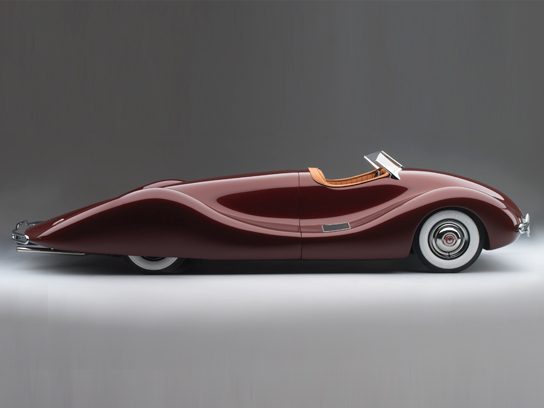
Norman Timbs Special, 1947
This low-slung vehicle was designed by Norman Timbs, who had created cars for the Indy 500 and was greatly influenced by that work. It took him two-and-a-half years and $10,000 to build, and it had an aluminum body and a steel chassis. But it was as distinguished by what it didn’t have: Chrome bumpers and tail fins, ubiquitous features in autos of the era. The car was recently restored by Dave Crouse at Custom Auto in Loveland, Colorado, and it was presented to a new generation of fans at the 2010 Amelia Island Concours d’Elegance.
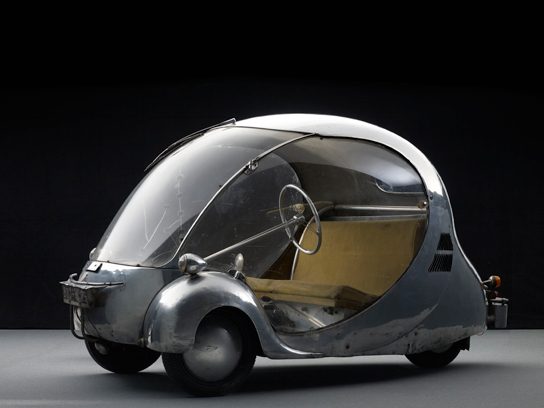
L’Oeuf electrique, 1942
“L’oeuf” means “the egg” in French, and this adorable green car was designed by Frenchman Paul Arzens to transport him around Paris. Its body largely consisted of plexiglass; powered by an electric motor, it could go 63 miles at roughly 43 mph when carrying the driver. This is the first time the Oeuf has traveled to the U.S.
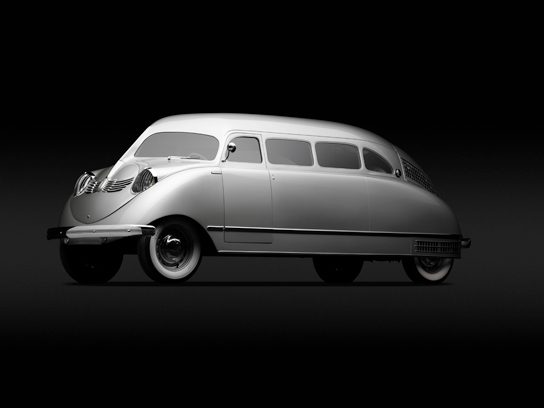
Stout Scarab, 1936
Designer William B. Stout was a pioneer in aeronautics and automobiles. With the Scarab, the engineer created a one-of-a-kind rear engine/rear wheel drive vehicle: It had electric door looks and moveable seating (the driver had the only stationary seat) with a fold-down table. An estimated nine Scarabs were built, and the Scarab is thought to have been a very precursor to the minivan.
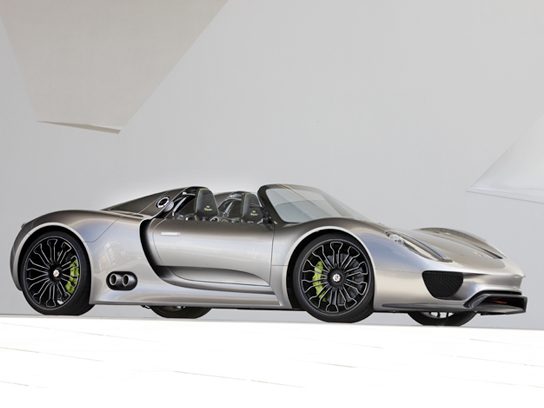
Porsche 918 Spyder Concept Car, 2010
This plug-in hybrid concept car was designed to combine energy efficiency with racing features. A low emission vehicle with both standard fuel and electric engines, it can go from 0 to 62 miles/hour in under 3.2 seconds, and it reaches a maximum speed of 198 mph. The two-seater has four modes of operation: E-Drive (using only electric power), Hybrid mode (using the electric and standard engines), Sport Hybrid (rear wheel boost), and Race Hybrid (both engines run at the limit of their power and output).
All images are provided by Atlanta’s High Museum of Art,
and these concept cars plus others make up the exhibit “Dream Cars:
Innovative Design, Visionary Ideas,” which has a run from May 21 through
September 7, 2014.